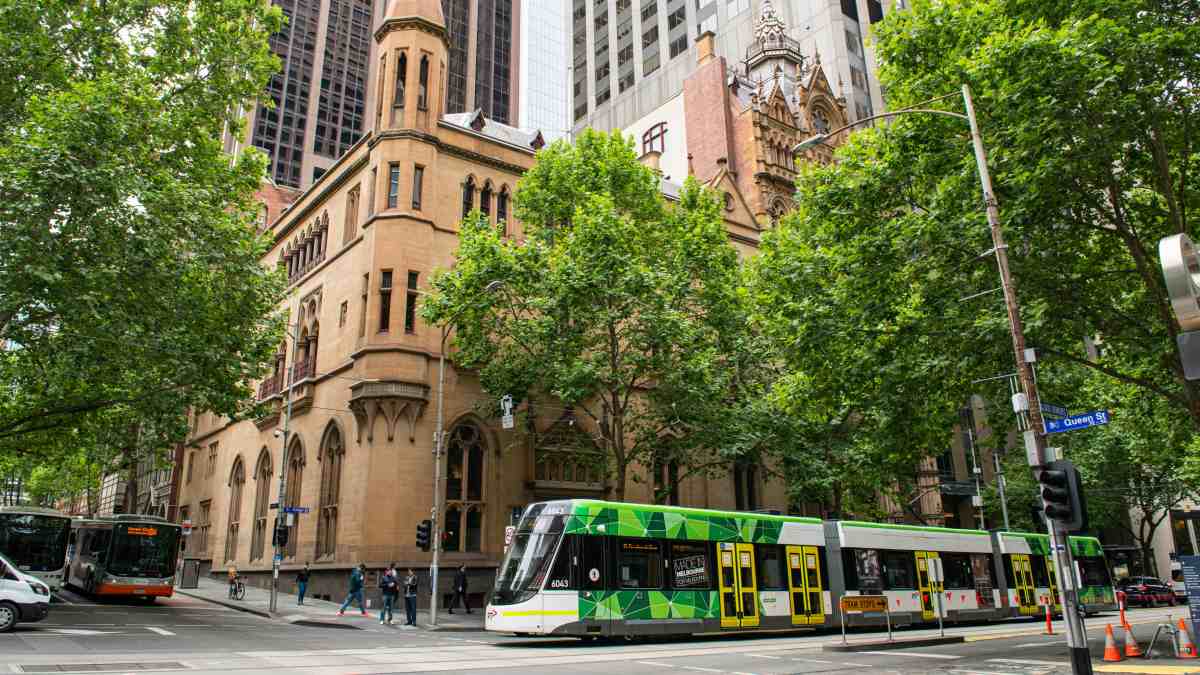RACV is inviting all motorists, cyclists, pedestrians, and public transport users to take part in the My Melbourne Road survey to have their voices heard, and help make our roads safer for everyone.
The history of hook turns – why does Melbourne have them?

We like to think of hook turns as something distinctly ‘Melbourne’, but the traffic rule has been implemented around the world for almost a century.
‘Go left to turn right' might sound like a riddle, but to Melbourne residents the phrase makes perfect sense, eventually. Like trams and laneway street art, hook turns are something commonly regarded as iconic to Melbourne, a traffic quirk that is a point of pride for locals and a cause of concern for tourists.
However, hook turns used to be a common road rule right across Australia and are still to this day used in several locations around the world to ease congestion and improve safety.
Why does Melbourne have hook turns?
Although they’re rare to find outside of Melbourne these days, hook turns used to be standard across Australia.
Up until the 1930s, it was normal to turn right from the left-hand lane in cities including Sydney and Adelaide. The hook turn was slowly phased out in these cities from 1939 onwards, with the unique turn being scrapped in favour of turning from the right lane.
Victoria, of course, didn’t remove hook turns entirely when it began to phase them out in the 1950s.
The rule to turn right from the left lane remained in place (and remains in place to this day) at intersections where tram lines cross, such as at the Elizabeth Street and La Trobe Street intersection.
The reason for this is simple; it means right-turning traffic does not hold up trams. Research from the Public Transport Research Group at Monash University in 2011 estimates this can save trams 11.25 to 15.64 seconds at each hook turn intersection.
The same report highlights that hook turn intersection can also improve safety and increase intersection capacity, as 38 per cent of drivers will tend to avoid hook turns where possible.

Hook turns can save trams 11.25 to 15.64 seconds at intersections. Photo: Visit Victoria
A global phenomenon
If you’re a cyclist, you’re likely already familiar with hook turns, even if you don’t think of them as such. For safety reasons, it’s common for cyclists to turn right from left at many intersections across Melbourne and Australia.
Under the Australian Road Rules, it’s legal for those on bicycles to make a hook turn at any intersection unless otherwise specified.
In other countries like Denmark, it’s mandatory for cyclists to make hook turns at intersections.
With no less than 49 hook turns scattered across the city, Melbourne is arguably the hook turn capital of the world, but it’s certainly not the only city to have them.
Hook turns are also used for bicycles, motorcycles or cars in countries like New Zealand, Japan and Taiwan.
Melbourne is also home to ‘P-turns’ at the intersection of Hoddle and Johnston streets, as well as at the Swan Street and Punt Road intersection.
A P-turn is where a vehicle goes straight through the intersection they wish to turn right at, makes a U-turn where signposted, then turns left onto the road they originally wished to turn right into.
How to do a hook turn
Hook turns might seem intimidating if you’ve never done one, but they’re easier than you might think:
- Make sure you’re in the left-hand lane as you approach the intersection you want to turn right at.
- If there’s line marking, then follow the lines, otherwise move forward, keeping as far to the left of the intersection as possible and clear of any marked foot crossing, until you’re at the far-side of the intersection.
- Remain waiting at the far side of the intersection until the lights on the road you are entering (turning right into) change to green.
- Once the lights turn green, turn right.


